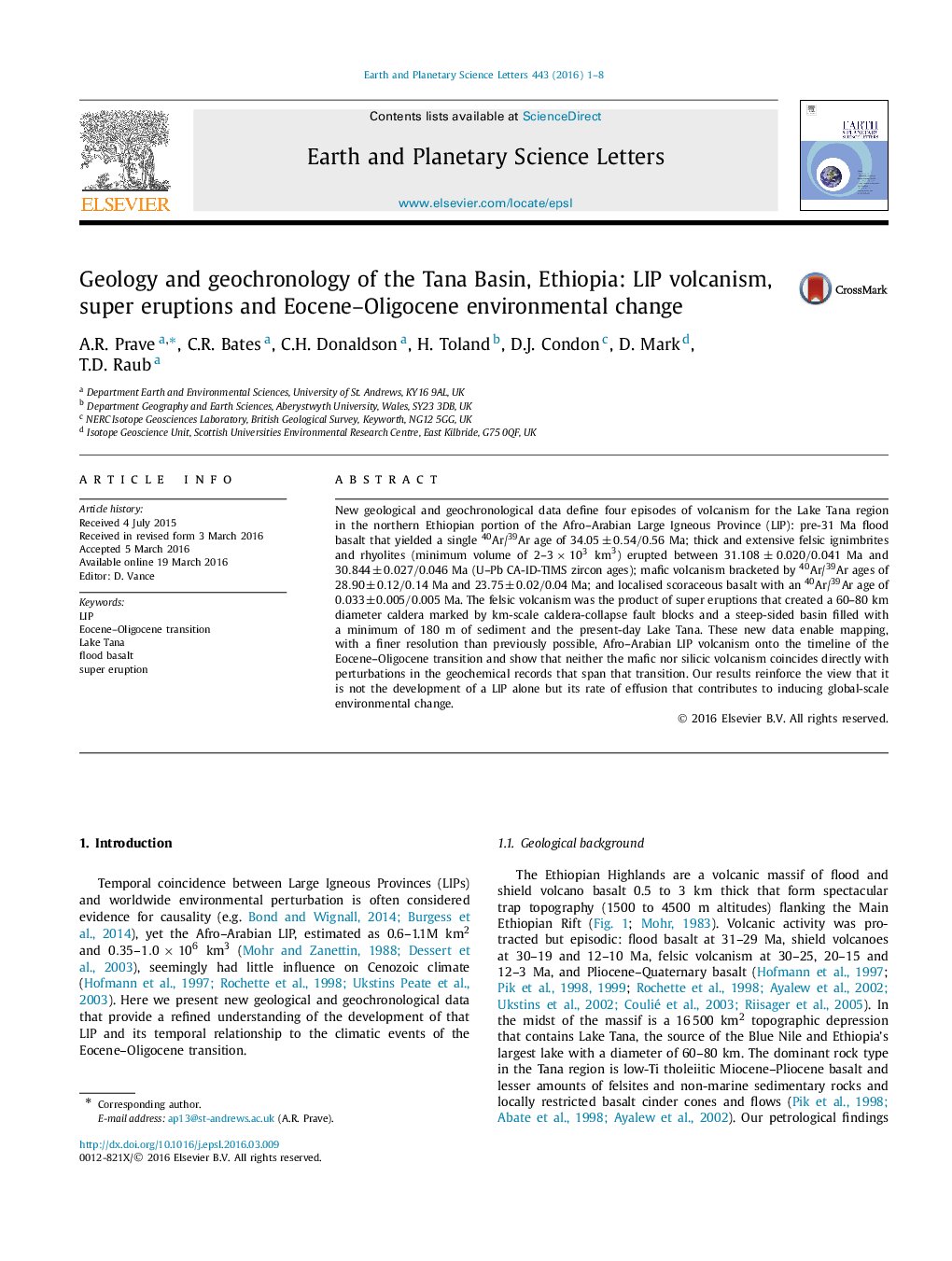| Article ID | Journal | Published Year | Pages | File Type |
|---|---|---|---|---|
| 6427417 | Earth and Planetary Science Letters | 2016 | 8 Pages |
â¢Two phases of mafic volcanism: pre-31 Ma flood basalt, a second phase ca. 29-24 Ma.â¢Felsic super eruptions occurred at ca. 31 Ma and spanned ca. 250 kyr.â¢Lake Tana is a 60-80 km diameter caldera filled with +180m of flat lying sediment.â¢Timing of volcanism and Eocene-Oligocene environmental perturbations are unrelated.
New geological and geochronological data define four episodes of volcanism for the Lake Tana region in the northern Ethiopian portion of the Afro-Arabian Large Igneous Province (LIP): pre-31 Ma flood basalt that yielded a single 40Ar/39Ar age of 34.05±0.54/0.56Ma; thick and extensive felsic ignimbrites and rhyolites (minimum volume of 2-3Ã103km3) erupted between 31.108±0.020/0.041Ma and 30.844±0.027/0.046Ma (U-Pb CA-ID-TIMS zircon ages); mafic volcanism bracketed by 40Ar/39Ar ages of 28.90±0.12/0.14Ma and 23.75±0.02/0.04Ma; and localised scoraceous basalt with an 40Ar/39Ar age of 0.033±0.005/0.005Ma. The felsic volcanism was the product of super eruptions that created a 60-80 km diameter caldera marked by km-scale caldera-collapse fault blocks and a steep-sided basin filled with a minimum of 180 m of sediment and the present-day Lake Tana. These new data enable mapping, with a finer resolution than previously possible, Afro-Arabian LIP volcanism onto the timeline of the Eocene-Oligocene transition and show that neither the mafic nor silicic volcanism coincides directly with perturbations in the geochemical records that span that transition. Our results reinforce the view that it is not the development of a LIP alone but its rate of effusion that contributes to inducing global-scale environmental change.
